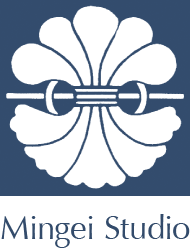Having recently returned from a week in Japan, Mary Taguchi writes:
For years I have wanted to be in Tohoku, the far north of Japan, seeking the cloths and studio workplaces of that region. The history has drawn me there, for in the very cold north, where cotton wouldn’t grow, Tohoku people originally wove the inner bark of woody plants such as hemp and wisteria. It was trading ships from Osaka that brought remnants of used cotton clothing and so the idea of tearing and weaving these cloths came into existence. This is what is called sakiori - literally “tear and weave”. This links with the frugal Japanese notion of not wasting perfectly good things; in the case of fabrics, by giving them a second life through re-weaving and embraced by a word used from each person’s early childhood - “That’s mottainai” - That’s wasteful.
Sakiori cloths could clearly be used for table covers in the winter, for belts/obi, for carry bags and for clothing such as vests and aprons.
With quite some preparation in hand, we took fast trains to the north, continuing in local buses to specific places. Although the prime time of Spring, it was very cold, then sleet and snow. It was good that the weather was like this, to understand better the sakiori story and the reason for the use of bright colours in weaving.. . . vibrant colours for relief from the cold, snowy white.
Seeing the cloths torn into narrow strips, the winding of these into small balls called hesomaki, the weaving on traditional strap looms and the make-up of the cloths into useful articles was as good as I ever wanted. I could immediately purchase table runners, bags and purses, and have cushion orders underway - the Mingei Store House is a perfect place for this work and I will love working with these happy, inspiring people.
Connecting to the requirements for warm clothing in Japan’s north is the decorative stitch, kogin. I needed to see this in operation, having discovered it many years ago on the clothing of actors in Akira Kurosawa’s film, ‘Dreams’. It is a clever stitch, always horizontal, with the ability to wed layers of cloth together as reinforcement and hence make warm garments. Because of being a horizontal stitch, hundreds of patterns of diamonds have been produced over hundreds of years. Another train, another bus and another town away, revealed the weaving, dyeing, cutting of cloth, stitching and make up of goods. Kogin stitched goods are now in the Mingei Store House and again, we have delightful people to work with from now on.










